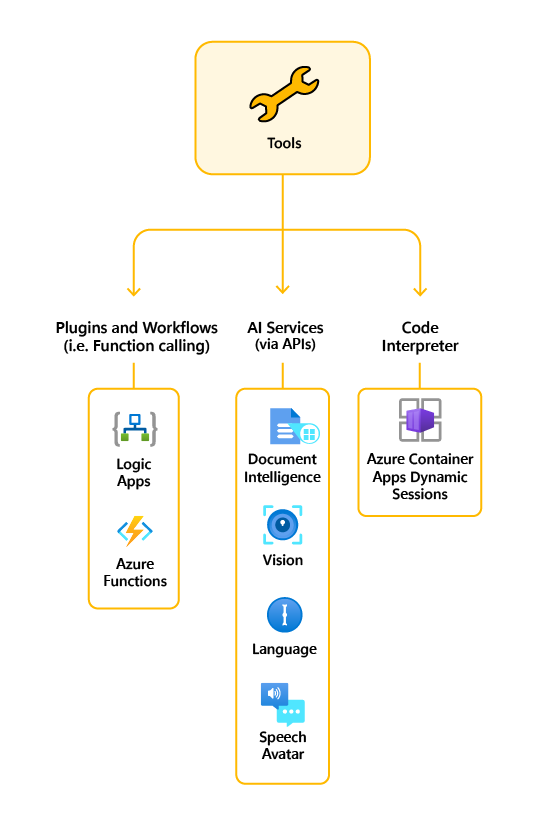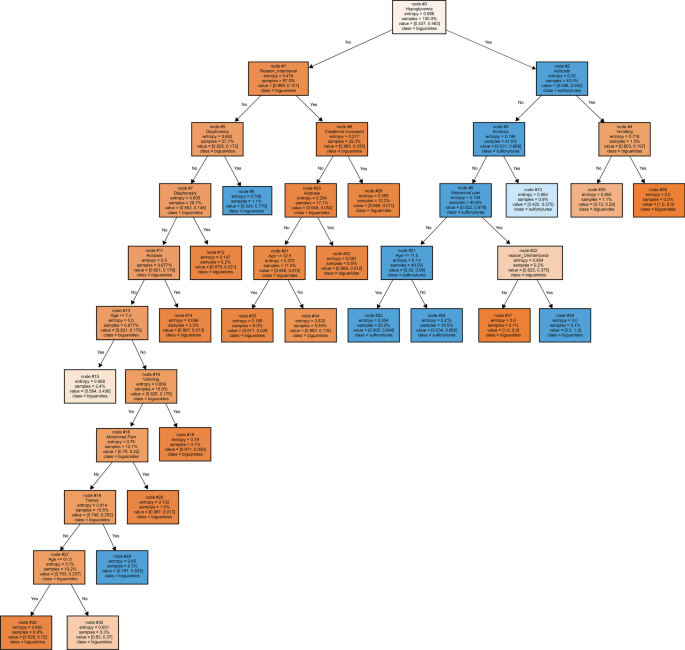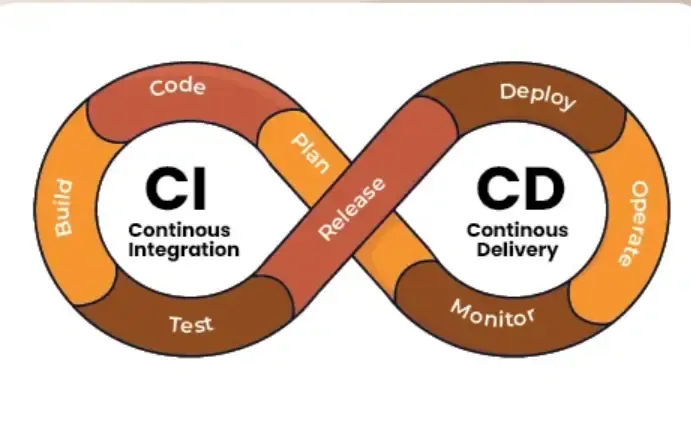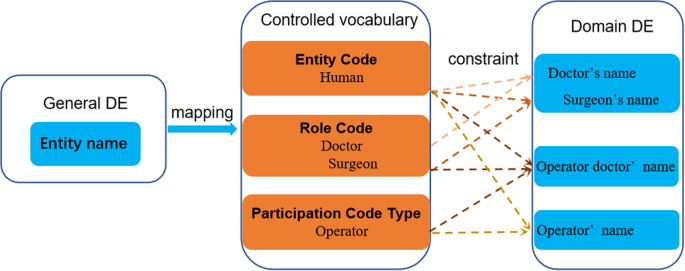AI Agent Frameworks: Building Visual Intelligence Systems for 2025 and Beyond
Understanding the AI Agent Ecosystem and Choosing the Right Framework for Your Needs
Understanding the AI Agent Ecosystem
As I explore the rapidly evolving world of AI in 2025, I'm continually amazed by how AI agent frameworks have transformed from simple language model integrations into sophisticated agentic systems. These frameworks now serve as the foundation for building intelligent, autonomous systems that can reason, plan, and execute complex tasks with minimal human intervention.

What Defines an AI Agent Framework?
In today's landscape, an AI agent framework is much more than just a wrapper around a language model. It's a comprehensive system that provides the structure, tools, and methodologies for developing autonomous AI entities capable of understanding complex instructions, making decisions, and taking actions to achieve specific goals.
Key distinction: While traditional automation follows rigid, predefined rules, AI agents can adapt their approach based on context, learn from interactions, and handle ambiguity—much closer to human-like problem-solving.
The Evolution of Agent Frameworks
The evolution of AI agent frameworks has been remarkable, moving from simple prompt-based interactions to complex, multi-agent systems with sophisticated reasoning capabilities.
flowchart TD
A[Simple LLM Prompting] -->|Evolution| B[Tool-Using Agents]
B -->|Evolution| C[Memory-Enhanced Agents]
C -->|Evolution| D[Multi-Agent Systems]
D -->|Evolution| E[Agentic AI Frameworks]
style A fill:#FFF4E6,stroke:#FF8000
style B fill:#FFF4E6,stroke:#FF8000
style C fill:#FFF4E6,stroke:#FF8000
style D fill:#FFF4E6,stroke:#FF8000
style E fill:#FF8000,stroke:#FF8000,color:#FFFFFF
I've found that one of the biggest challenges in working with these advanced systems is effectively communicating their architecture and behavior. This is where visual representations become invaluable—they transform abstract agent concepts into clear, understandable workflows that both technical and non-technical stakeholders can grasp.
With PageOn.ai, I can transform complex agent architectures into visual workflows that clearly illustrate how different components interact, making it significantly easier to design, refine, and explain these systems to stakeholders who might not have a technical background in AI.
Leading AI Agent Frameworks in 2025
The landscape of AI agent frameworks has expanded dramatically in recent years, with several key players emerging as leaders in different niches. I'll walk through the most influential frameworks and how they're being used to build sophisticated agent systems.
Framework popularity based on developer adoption and enterprise implementation (2025 data):
LangChain & LangGraph
LangChain continues to be one of the most widely adopted frameworks for AI agent development, particularly for teams looking to quickly prototype and deploy straightforward agent applications. Its modular design allows developers to easily compose different components to create custom agent behaviors.
LangGraph extends LangChain with more sophisticated agent orchestration capabilities:
flowchart TD
A[User Input] --> B[Agent Coordinator]
B --> C{Task Type}
C -->|Research| D[Research Agent]
C -->|Analysis| E[Analysis Agent]
C -->|Content Creation| F[Creation Agent]
D --> G[Memory Store]
E --> G
F --> G
G --> B
style B fill:#FFF4E6,stroke:#FF8000
style C fill:#FFF4E6,stroke:#FF8000
style D fill:#FFF4E6,stroke:#FF8000
style E fill:#FFF4E6,stroke:#FF8000
style F fill:#FFF4E6,stroke:#FF8000
style G fill:#FFF4E6,stroke:#FF8000
I've found that LangChain's strength lies in its extensive library of connectors and tools that make it easy to integrate with external services. However, when working with complex agent systems, visualizing the flow of information becomes crucial—this is where PageOn.ai's visual workflow tools can significantly enhance the development process.
OpenAI Agents SDK
The OpenAI Agents SDK has emerged as a powerful option for developers looking to leverage OpenAI's advanced models within a structured framework. It provides native integration with OpenAI's latest models and tools, making it particularly effective for complex reasoning tasks.

One of the key differentiators of the OpenAI Agents SDK is its built-in support for advanced reasoning techniques and its optimization for OpenAI's most capable models. This makes it particularly well-suited for applications requiring sophisticated decision-making capabilities.
Enterprise Solutions
For enterprise environments, specialized frameworks have emerged that focus on integration with existing business systems and processes. These frameworks prioritize security, governance, and scalability—critical considerations for enterprise AI deployments.
| Framework | Key Features | Best For |
|---|---|---|
| Salesforce Agentforce | CRM-native AI agents, customer context awareness, workflow automation | Customer service, sales automation, marketing personalization |
| IBM Agent Development | Enterprise-grade security, comprehensive governance, hybrid cloud support | Regulated industries, large-scale deployments, complex workflows |
| Microsoft Semantic Kernel | Deep Microsoft ecosystem integration, Azure services compatibility | Microsoft-centric organizations, .NET development teams |
When working with enterprise frameworks, I've found that visualizing the integration points with existing systems is crucial for successful implementation. Using PageOn.ai's visual mapping tools, I can create clear diagrams showing how agent frameworks connect with legacy systems, data sources, and business processes.
Emerging Specialized Frameworks
Beyond the major players, several specialized frameworks have emerged to address specific use cases or development approaches. These frameworks often excel in particular niches while sacrificing some of the breadth offered by more general-purpose solutions.
CrewAI's multi-agent orchestration model:
flowchart TD
A[Task Manager] --> B[Agent 1: Researcher]
A --> C[Agent 2: Writer]
A --> D[Agent 3: Editor]
A --> E[Agent 4: Fact Checker]
B --> F[Shared Memory]
C --> F
D --> F
E --> F
F --> A
style A fill:#FF8000,stroke:#FF8000,color:#FFFFFF
style B fill:#FFF4E6,stroke:#FF8000
style C fill:#FFF4E6,stroke:#FF8000
style D fill:#FFF4E6,stroke:#FF8000
style E fill:#FFF4E6,stroke:#FF8000
style F fill:#FFF4E6,stroke:#FF8000
I've been particularly impressed with CrewAI's approach to multi-agent orchestration. By designing systems where multiple specialized agents collaborate on complex tasks, CrewAI enables more sophisticated behaviors than what's typically possible with single-agent architectures.
For lightweight implementations where resource efficiency is paramount, Smolagents offers an interesting alternative. It focuses on minimizing computational overhead while still providing core agent capabilities, making it well-suited for edge deployments or applications with strict resource constraints.
Using PageOn.ai's comparison tools, I can create side-by-side visual representations of different framework architectures, making it much easier to evaluate their strengths and weaknesses for specific use cases.
Technical Architecture Components
Understanding the building blocks of modern AI agent frameworks is essential for effective implementation. These components work together to create systems capable of sophisticated reasoning and action.
Building Blocks of Modern Agent Frameworks
The core components that make up a modern AI agent framework:
flowchart TD
A[Foundation Model] --> B[Reasoning Engine]
A --> C[Tool Use Module]
A --> D[Memory System]
B --> E[Planning Module]
C --> F[API Connector]
D --> G[Context Store]
E --> H[Task Execution]
F --> H
G --> B
style A fill:#FF8000,stroke:#FF8000,color:#FFFFFF
style B fill:#FFF4E6,stroke:#FF8000
style C fill:#FFF4E6,stroke:#FF8000
style D fill:#FFF4E6,stroke:#FF8000
style E fill:#FFF4E6,stroke:#FF8000
style F fill:#FFF4E6,stroke:#FF8000
style G fill:#FFF4E6,stroke:#FF8000
style H fill:#FFF4E6,stroke:#FF8000
At the heart of every AI agent framework is the foundation model—typically a large language model (LLM) that provides the base intelligence for the agent. The framework then extends this with specialized components for reasoning, tool usage, memory, and more.
LLM Foundation
Provides base intelligence, reasoning capabilities, and natural language understanding.
Tool Usage
Enables agents to interact with external systems, APIs, and data sources.
Memory Systems
Store conversation history, facts, and context for consistent agent behavior.
Context Management
Maintains relevant information throughout complex, multi-step interactions.
I've found that visualizing the flow of information through these components is crucial for understanding how agents process requests and generate responses. Using PageOn.ai's AI Blocks feature, I can create clear diagrams showing how data moves through the system, which helps identify potential bottlenecks or areas for optimization.
Decision-Making Mechanisms
The decision-making capabilities of AI agents have advanced significantly, with modern frameworks implementing sophisticated planning and reasoning systems.

Advanced agent frameworks now implement various reasoning strategies:
- Chain-of-thought reasoning: Breaking complex problems into sequential steps
- Tree-of-thought exploration: Considering multiple reasoning paths simultaneously
- Recursive task decomposition: Breaking large tasks into manageable sub-tasks
- Self-reflection and verification: Evaluating and correcting reasoning errors
When implementing these decision-making mechanisms, I use PageOn.ai's visualization tools to create clear representations of complex decision trees. This makes it much easier to understand, debug, and refine the agent's reasoning process.
Development Patterns
Two primary patterns have emerged for developing AI agent systems: workflow-based approaches and fully autonomous approaches. Each has distinct advantages depending on the use case.
Comparing development patterns based on task complexity and required flexibility:
Workflow-based approaches provide more predictability and control, making them ideal for critical business processes where reliability is paramount. In contrast, fully autonomous approaches offer greater flexibility and adaptability, better suited for complex, variable tasks where the exact solution path isn't known in advance.
In my experience, creating visual process maps using PageOn.ai has been invaluable for determining which development pattern is most appropriate for a specific use case. These visualizations make it much easier to identify where structured workflows are sufficient and where more autonomous agent behavior is required.
Selection Criteria for the Right Framework
Choosing the right AI agent framework is a critical decision that can significantly impact the success of your project. I've developed a systematic approach to evaluating frameworks based on business requirements, technical factors, and implementation considerations.
Business Requirements Assessment
The first step in selecting a framework is to clearly understand your business requirements and how they align with the capabilities of different frameworks.
Decision tree for framework selection based on business requirements:
flowchart TD
A[Start Selection Process] --> B{Enterprise Integration?}
B -->|Yes| C{Existing CRM?}
B -->|No| D{Development Speed?}
C -->|Salesforce| E[Salesforce Agentforce]
C -->|Other/None| F[IBM Agent Development]
D -->|Critical| G{Complexity?}
D -->|Not Critical| H{Team Expertise?}
G -->|Simple| I[LangChain]
G -->|Complex| J[OpenAI Agents SDK]
H -->|Python| I
H -->|.NET| K[Semantic Kernel]
style A fill:#FFF4E6,stroke:#FF8000
style B fill:#FFF4E6,stroke:#FF8000
style C fill:#FFF4E6,stroke:#FF8000
style D fill:#FFF4E6,stroke:#FF8000
style E fill:#FF8000,stroke:#FF8000,color:#FFFFFF
style F fill:#FF8000,stroke:#FF8000,color:#FFFFFF
style G fill:#FFF4E6,stroke:#FF8000
style H fill:#FFF4E6,stroke:#FF8000
style I fill:#FF8000,stroke:#FF8000,color:#FFFFFF
style J fill:#FF8000,stroke:#FF8000,color:#FFFFFF
style K fill:#FF8000,stroke:#FF8000,color:#FFFFFF
Key business considerations include:
- Integration requirements: How the framework will connect with existing systems
- Scalability needs: Current and future volume of interactions
- Security and compliance: Industry-specific regulatory requirements
- Time-to-market constraints: Development timeline pressures
I use PageOn.ai to create visual decision matrices that help stakeholders understand how different frameworks align with business requirements. These visualizations make it much easier to build consensus around framework selection decisions.
Technical Evaluation Factors
Beyond business requirements, technical factors play a crucial role in determining which framework will be most effective for your specific use case.
Framework comparison across key technical dimensions:
When evaluating frameworks, I consider these key technical factors:
- Development complexity: How steep is the learning curve?
- Customization capabilities: Can it be adapted to specific needs?
- Performance characteristics: How efficiently does it handle requests?
- Integration ecosystem: What tools and services can it connect with?
Using PageOn.ai's Deep Search feature, I can integrate benchmark data and technical comparisons from multiple sources to create comprehensive framework evaluation visualizations. This helps ensure that technical decisions are based on accurate, up-to-date information.
Implementation Considerations
Beyond the technical capabilities of a framework, practical implementation factors can significantly impact the success of your agent development project.
| Framework | Typical Dev Time | Cost Model | Community Size |
|---|---|---|---|
| LangChain | 2-4 weeks | Open-source + Cloud option | Very Large |
| OpenAI Agents SDK | 1-3 weeks | API usage-based | Large |
| Salesforce Agentforce | 4-8 weeks | Enterprise licensing | Medium |
| IBM Agent Development | 6-12 weeks | Enterprise licensing | Medium |
| CrewAI | 3-6 weeks | Open-source | Growing |
Key implementation considerations include:
- Development time: How quickly can you get to production?
- Resource requirements: What team skills and infrastructure are needed?
- Cost structure: How does the pricing model align with your usage patterns?
- Community support: How active is the developer community?
I use PageOn.ai to create visual implementation roadmaps and timelines that help teams understand the development process for different frameworks. These visualizations are particularly valuable for setting realistic expectations with stakeholders and identifying potential resource constraints.
Testing and Evaluation Methodologies
Rigorous testing and evaluation are essential for ensuring that AI agent systems meet performance, reliability, and security requirements. I've developed comprehensive approaches for benchmarking and quality assurance.
Performance Benchmarking Approaches
Standardized benchmarking methodologies allow for objective comparison of different frameworks and agent implementations. These approaches focus on key performance indicators that matter for real-world applications.

I've found that comprehensive AI agent testing frameworks are essential for evaluating performance across multiple dimensions. These frameworks allow for systematic comparison of different agent implementations using standardized test cases and metrics.
Performance comparison across key metrics:
Key metrics for agent performance evaluation include:
- Response time: How quickly the agent processes requests
- Accuracy: How often the agent provides correct information
- Task completion rate: The percentage of tasks successfully completed
- Reasoning quality: The logical soundness of the agent's decisions
- Tool usage efficiency: How effectively the agent leverages available tools
Using PageOn.ai's visualization capabilities, I create comprehensive dashboards that present performance data in an intuitive, accessible format. These visualizations make it easy to identify performance bottlenecks and compare different agent implementations.
Quality Assurance for Agent Systems
Beyond performance benchmarking, comprehensive quality assurance is essential for ensuring that agent systems meet reliability, security, and user experience requirements.
Comprehensive QA testing framework for AI agents:
flowchart TD
A[AI Agent System] --> B[Functional Testing]
A --> C[Performance Testing]
A --> D[Security Testing]
A --> E[UX Testing]
B --> F[Unit Tests]
B --> G[Integration Tests]
B --> H[End-to-End Tests]
C --> I[Load Testing]
C --> J[Stress Testing]
C --> K[Latency Testing]
D --> L[Prompt Injection]
D --> M[Data Leakage]
D --> N[Authentication]
E --> O[Usability Studies]
E --> P[A/B Testing]
style A fill:#FF8000,stroke:#FF8000,color:#FFFFFF
style B fill:#FFF4E6,stroke:#FF8000
style C fill:#FFF4E6,stroke:#FF8000
style D fill:#FFF4E6,stroke:#FF8000
style E fill:#FFF4E6,stroke:#FF8000
I approach quality assurance for agent systems with a comprehensive strategy that includes:
- Reliability testing: Ensuring consistent performance under various conditions
- Security evaluation: Identifying and addressing vulnerabilities
- User experience assessment: Measuring and optimizing user satisfaction
- Regression testing: Verifying that new updates don't break existing functionality
PageOn.ai's visualization tools help me create clear representations of test coverage and results, making it easier to communicate QA status to stakeholders and identify areas that require additional testing.
Building Effective Agent Toolchains
Creating effective AI agent systems often requires integrating multiple tools and services into cohesive toolchains. These toolchains enable agents to access the data and functionality needed to accomplish complex tasks.
Integration Patterns
Successful agent implementations rely on well-designed integration patterns that connect frameworks with external tools, APIs, and data sources.
Common integration patterns for AI agent toolchains:
flowchart TD
A[AI Agent Framework] --> B[API Gateway]
B --> C[External APIs]
B --> D[Internal Services]
A --> E[Vector Database]
E --> F[Document Storage]
A --> G[Tool Registry]
G --> H[Custom Tools]
G --> I[Standard Tools]
A --> J[Orchestration Layer]
J --> K[Workflow Engine]
style A fill:#FF8000,stroke:#FF8000,color:#FFFFFF
style B fill:#FFF4E6,stroke:#FF8000
style E fill:#FFF4E6,stroke:#FF8000
style G fill:#FFF4E6,stroke:#FF8000
style J fill:#FFF4E6,stroke:#FF8000
I've found that well-designed AI agent tool chains are essential for creating seamless workflow designs. These tool chains provide the connective tissue between different components of the agent system, enabling smooth data flow and efficient task execution.
Key insight: The most effective agent toolchains prioritize standardized interfaces and clear data contracts between components, making it easier to swap out or upgrade individual tools without disrupting the entire system.
Using PageOn.ai's visual mapping tools, I create clear diagrams showing how different components connect within the toolchain. These visualizations are invaluable for identifying potential integration issues and ensuring that data flows smoothly through the system.
Development Workflows
Effective development workflows are essential for building, testing, and deploying AI agent systems efficiently. Modern CI/CD practices have been adapted specifically for agent development.

Key elements of modern agent development workflows include:
- Version control for agent behaviors: Tracking changes to agent capabilities and responses
- Automated testing pipelines: Continuously validating agent functionality
- Deployment strategies: Safely rolling out updates to production systems
- Monitoring and observability: Tracking agent performance in real-time
I use PageOn.ai to create visual documentation of development pipelines, making it easier for teams to understand the flow from development to production. These visualizations help ensure that all team members are aligned on development practices and deployment procedures.
Democratizing AI Agent Development
One of the most exciting trends in AI agent development is the democratization of these technologies through low-code and no-code solutions. These tools are making agent development accessible to a much wider audience.
Low-Code and No-Code Solutions
Low-code and no-code platforms are transforming how organizations approach AI agent development, enabling non-technical users to create sophisticated agent systems without extensive programming knowledge.
Adoption of low-code/no-code agent development platforms:
Platforms like Dify, with over 93,000 GitHub stars, have made significant strides in democratizing AI agents through no-code creation tools. These platforms provide visual workflow builders that allow users to design agent behaviors without writing code.
In my experience, PageOn.ai has been instrumental in enabling non-technical users to design agent workflows visually. By providing intuitive tools for mapping out agent behaviors and interactions, PageOn.ai makes it possible for business users to directly contribute to agent development without requiring deep technical knowledge.
Custom Solutions for Specific Industries
Beyond general-purpose frameworks, specialized agent solutions are emerging for specific industries and use cases. These custom solutions address the unique requirements and constraints of different vertical markets.

Custom AI agents are becoming increasingly important for small business intelligence applications. These specialized agents can be tailored to the specific needs and workflows of different industries, providing targeted functionality that generic solutions can't match.
| Industry | Specialized Agent Functions | Key Benefits |
|---|---|---|
| Healthcare | Patient data analysis, treatment recommendation support, scheduling optimization | Improved patient outcomes, reduced administrative burden |
| Finance | Risk assessment, fraud detection, personalized financial advice | Enhanced security, better customer service, regulatory compliance |
| Manufacturing | Predictive maintenance, quality control, supply chain optimization | Reduced downtime, improved product quality, cost savings |
| Retail | Inventory management, customer service automation, personalized recommendations | Enhanced customer experience, operational efficiency, increased sales |
Using PageOn.ai's visualization tools, I create detailed diagrams of industry-specific agent architectures and workflows. These visualizations help stakeholders understand how custom agent solutions address their specific needs and integrate with existing business processes.
Future Trends in AI Agent Frameworks
As we look ahead, several emerging trends are shaping the future of AI agent frameworks. These developments promise to further enhance the capabilities and applications of agent systems.
Emerging Technologies and Approaches
The next generation of AI agent frameworks is being shaped by several key technological advances and novel approaches to agent design.
Multi-agent collaboration system architecture:
flowchart TD
A[Orchestration Layer] --> B[Agent 1: Researcher]
A --> C[Agent 2: Analyst]
A --> D[Agent 3: Writer]
A --> E[Agent 4: Critic]
B --> F[Shared Knowledge Base]
C --> F
D --> F
E --> F
F --> A
B <--> C
C <--> D
D <--> E
style A fill:#FF8000,stroke:#FF8000,color:#FFFFFF
style B fill:#FFF4E6,stroke:#FF8000
style C fill:#FFF4E6,stroke:#FF8000
style D fill:#FFF4E6,stroke:#FF8000
style E fill:#FFF4E6,stroke:#FF8000
style F fill:#FFF4E6,stroke:#FF8000
Key emerging technologies and approaches include:
- Multi-agent collaboration systems: Enabling teams of specialized agents to work together on complex tasks
- Self-improving agent architectures: Agents that can learn from experience and improve their own capabilities
- Hybrid human-AI agent frameworks: Systems that seamlessly combine human and AI capabilities for optimal results
- Embodied agents: Connecting AI agents to physical systems for real-world interaction
I use PageOn.ai to create timeline infographics that visualize the evolution of agent frameworks, helping stakeholders understand how these technologies are likely to develop over time. These visualizations make it easier to plan for future capabilities and identify emerging opportunities.
Ethical Considerations and Governance
As AI agent systems become more powerful and widespread, ethical considerations and governance frameworks are becoming increasingly important.

Key ethical and governance considerations include:
- Transparency and explainability: Ensuring agent decisions can be understood and audited
- Bias mitigation: Identifying and addressing potential biases in agent behavior
- Security and privacy: Protecting sensitive data and preventing misuse
- Human oversight: Maintaining appropriate human control over agent systems
Using PageOn.ai's visualization tools, I create clear representations of ethical frameworks and governance structures for agent development. These visualizations help ensure that all stakeholders understand the ethical considerations and compliance requirements for agent systems.
Predictions for Framework Evolution
Based on current trends and emerging technologies, we can make some predictions about how AI agent frameworks will evolve over the next few years.
Predicted trends in framework evolution through 2026:
Key predictions for framework evolution include:
- Convergence of capabilities: Core features becoming standardized across frameworks
- Specialization for vertical markets: Frameworks optimized for specific industries
- Increased abstraction: Higher-level development interfaces reducing technical complexity
- Deeper integration with existing systems: Seamless connections with business applications
Using PageOn.ai's visualization capabilities, I create roadmap visualizations that help organizations plan for the future evolution of AI agent technologies. These visualizations make it easier to align technology investments with business strategy and ensure readiness for emerging capabilities.
Transform Your Visual Expressions with PageOn.ai
Ready to create stunning visualizations of your AI agent architectures? PageOn.ai provides the tools you need to transform complex technical concepts into clear, compelling visual representations.
Start Creating with PageOn.ai TodayBringing It All Together
As I've explored throughout this guide, AI agent frameworks have evolved into sophisticated systems capable of transforming how organizations approach automation, decision-making, and user interaction. From established options like LangChain and the OpenAI Agents SDK to enterprise solutions from Salesforce and IBM, the framework landscape offers diverse options to meet different needs.
The key to successful implementation lies in carefully evaluating your specific requirements, selecting the appropriate framework, and following best practices for development, testing, and deployment. By leveraging visual tools like PageOn.ai, you can significantly enhance your ability to design, understand, and communicate complex agent architectures.
As these technologies continue to evolve, staying informed about emerging trends and approaches will be essential for maintaining competitive advantage. The future of AI agent frameworks promises even more powerful capabilities, with multi-agent systems, self-improving architectures, and hybrid human-AI approaches opening new possibilities for innovation.
By combining technical expertise with powerful visualization tools like PageOn.ai, you can navigate this complex landscape more effectively and build AI agent systems that deliver real value to your organization and users.
You Might Also Like
Enhancing Audience Experience with Strategic Audio Integration | Create Immersive Brand Connections
Discover how strategic audio integration creates immersive brand connections across podcasts, streaming platforms, and smart speakers. Learn frameworks and techniques to transform your marketing.
The Creative Edge: Harnessing Templates and Icons for Impactful Visual Design
Discover how to leverage the power of templates and icons in design to boost creativity, not restrict it. Learn best practices for iconic communication and template customization.
Revolutionizing Slides: The Power of AI Presentation Tools | PageOn.ai
Discover how AI presentation tools are transforming slide creation, saving hours of work while enhancing design quality. Learn how PageOn.ai can help visualize your ideas instantly.
The AI-Powered Pitch Deck Revolution: A Three-Step Framework for Success
Discover the three-step process for creating compelling AI-powered pitch decks that captivate investors. Learn how to clarify your vision, structure your pitch, and refine for maximum impact.